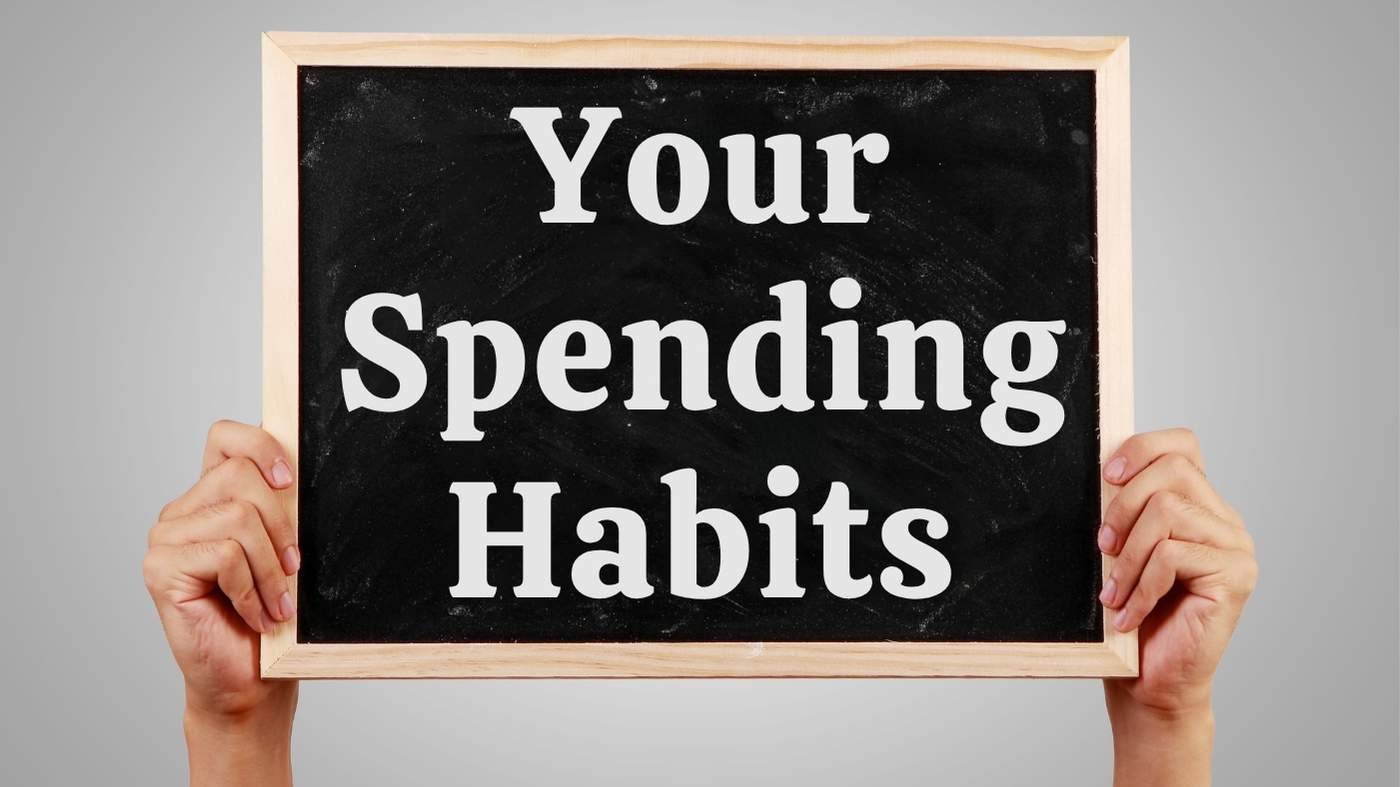Have you ever stopped to wonder what your spending patterns reveal about you? Every rupee you spend reflects your beliefs, emotions, and priorities. Whether it’s impulsive shopping or meticulous budgeting, your financial behaviours offer a window into your personality, discipline, and even your future wealth trajectory.
This blog examines the psychology behind spending habits and how understanding them can lead to more informed financial decisions. By the end, you’ll learn how to audit your expenses and align them with your life goals.
What Do Your Spending Habits Reveal About You?
1. Spending as a Mirror of Values
Your spending habits tell a story about what truly matters to you.
- Someone who invests in luxury items may value status, prestige, or aesthetic satisfaction.
- A person who spends on wellness or education is likely focused on growth and well-being.
- Frequent travel spending may indicate a desire for freedom, adventure, and new experiences.
These choices aren’t inherently good or bad—they reveal priorities. When your spending aligns with your core values, you’re more likely to feel fulfilled and less likely to regret purchases.
Tip: Review your bank statement or expense tracker. Identify the top three categories and reflect on what they reveal about your life priorities.
2. Are You an Impulsive Spender?
Impulsive spending is often driven by emotion, rather than necessity. It typically results from psychological triggers, such as stress, boredom, or social comparison.
Examples of impulsive behaviour:
- Shopping to reward yourself after a rough day.
- Clicking “Buy Now” during late-night scrolling.
- Purchasing a gadget or clothing item because a friend or influencer has it.
This behaviour often leads to clutter, credit card debt, and guilt. It disconnects spending from financial goals and long-term satisfaction.
Solutions:
- Use a wishlist or 24-hour rule before any discretionary purchase.
- Delay gratification by setting monthly limits or cash envelopes for non-essential categories.
3. The Frugal vs. The Fearful
Being frugal is generally praised, but excessive cost-cutting might be a sign of fear, not discipline. People who grew up with financial insecurity may develop an unhealthy relationship with money, saving not out of a strategy but out of fear of future scarcity.
Signs of fearful frugality:
- Refusing to buy essential items, such as better shoes, healthier food, or necessary repairs.
- Avoiding holidays, hobbies, or self-care, even when affordable.
Extreme frugality can lead to poor quality of life, missed opportunities, and burnout. Remember: responsible spending includes budgeting for joy and well-being.
Balance Tip: Allocate a ‘fun fund’ within your monthly budget—an amount you’re guilt-free to enjoy.
4. The Credit Card Illusion
Credit cards offer convenience but also mask the reality of spending. Since there’s no immediate cash outflow, the pain of payment is delayed—and so is financial accountability.
What it reveals:
- A preference for instant gratification over delayed (long-term) rewards.
- A risk of overspending without realising it.
Many people focus solely on minimum payments, overlooking the accumulation of interest. Credit card EMI offers might seem easy, but they can trap you in long-term debt for short-term purchases.
Smart Credit Use:
- Track all card expenses weekly.
- Pay in full every month.
- Use credit for rewards, not reliance.
5. Emotional Spending and Identity
People often use spending as a way to cope with emotional discomfort. Whether it’s loneliness, boredom, or low self-esteem, buying something offers temporary relief and a sense of control.
Examples:
- Shopping when sad or anxious.
- Associating high-end brands with self-worth.
- Feeling a temporary high after buying something new, followed by regret.
This is not just financial—it’s emotional. Instead of shopping, channel your emotions into healthier outlets, such as journaling, taking walks, meditation, or therapy.
Ask yourself: “Am I shopping to solve an emotional problem?”
6. Spending on Others
While generosity is a virtue, some people overspend on others out of guilt, pressure, or a need to be liked. This is especially common in family-centric cultures where saying “no” feels taboo.
Examples:
- Constantly paying for outings with friends.
- Gifting beyond your means.
- Financially supporting extended family at the cost of your savings.
This habit may come from a place of love, but if unchecked, it can derail your own financial goals.
Boundaries Matter: Learn to Say No Politely but Firmly. Help others from your surplus, not your survival budget.
7. Goal-Driven Spenders
These individuals align their spending with well-defined financial goals. Every rupee spent or saved has a purpose. They prioritise needs over wants and plan proactively.
Traits of goal-driven spenders:
- Maintain a written budget.
- Use automated SIPs or recurring deposits.
- Evaluate purchases through a long-term lens.
These habits build financial stability and reduce decision fatigue. If you’re not yet goal-driven, start with one SMART goal, such as saving ₹5 lakhs in 3 years for a home down payment.
8. The Scarcity vs. Abundance Mindset
Your mindset influences how you perceive money:
- Scarcity mindset: Focuses on limitations. You hoard, underspend, or overwork, fearing there’s never enough.
- Abundance mindset: Trusts in the ability to earn, create, and grow wealth. Encourages wise spending and calculated risk-taking.
Example: A scarcity thinker might avoid investing, fearing loss, while an abundance thinker sees long-term SIPs as a way to build future freedom.
You can shift your mindset by tracking progress, celebrating financial wins, and reframing challenges as opportunities.
9. Cultural & Family Influence
Our first lessons about money often come from our families. Whether explicit or subtle, family financial behaviours profoundly shape our own.
Influences include:
- Parents who avoid discussing money may lack budgeting skills.
- Growing up in debt → you might fear credit or a tendency to overspend in an attempt to “make up” for the past.
- Being told “money doesn’t grow on trees”, → you may associate wealth with guilt.
Reflection Tip: Journal about your earliest memories of money. Are they helping or hurting your current decisions?
10. Your Spending, Your Story
Each person has a unique financial narrative, shaped by experiences, beliefs, and values. Your expenses are like diary entries—recording what you care about, how you feel, and what you expect from life.
Doing a monthly expense audit can reveal a lot:
- Are your purchases driven by intention or reaction?
- Do they align with who you are or who you’re trying to impress?
- Are you spending on what brings long-term joy or just momentary relief?
Challenge: Do a 30-day money journal. Track not just the “what” but also the “why” behind each purchase.
Final Words
Understanding your spending is like holding up a mirror to your money personality. The goal is not guilt, but awareness. Once you see the patterns, you gain the power to change them.
Spending can either be a trap or a tool. When aligned with purpose and values, it becomes a force for freedom.
📘 Further Reading: What Your Spending Habits Say About You
🔹 1. What Your Spending Habits Say About You – Psychology Today
Explores the deep connection between emotional needs and spending patterns, such as whether you spend to feel loved, robust, or secure.
🔹 2. Your Money Personality: What Your Spending Habits Reveal – CNBC Make It
Breaks down different “money personalities” and how they influence choices like saving, splurging, or giving.
🔹 3. How Your Spending Habits Reflect Your Values – Forbes
Explains how, where and how you spend money mirrors your priorities—whether it’s freedom, security, generosity, or status.
🔹 4. Why Doom Spending Isn’t the Stress Relief You Think You Need – Verywell Mind
Unpacks the emotional triggers behind impulse purchases during tough times—and how they often worsen financial and mental stress.
🔹 5. Spend Money Where You Spend the Most Time – The New York Times
Encourages mindful spending by investing in areas of daily life, such as a better mattress or an ergonomic chair, for long-term happiness.
Disclaimer: The information provided in this blog is for educational and informational purposes only and should not be considered as financial, investment, or tax advice. While every effort has been made to ensure accuracy, readers must consult a qualified financial advisor before making investment decisions. VSJ FinMart is an AMFI-registered mutual fund distributor (MFD) that does not provide investment advisory services. Mutual fund investments are subject to market risks; please read all scheme-related documents carefully before investing.

